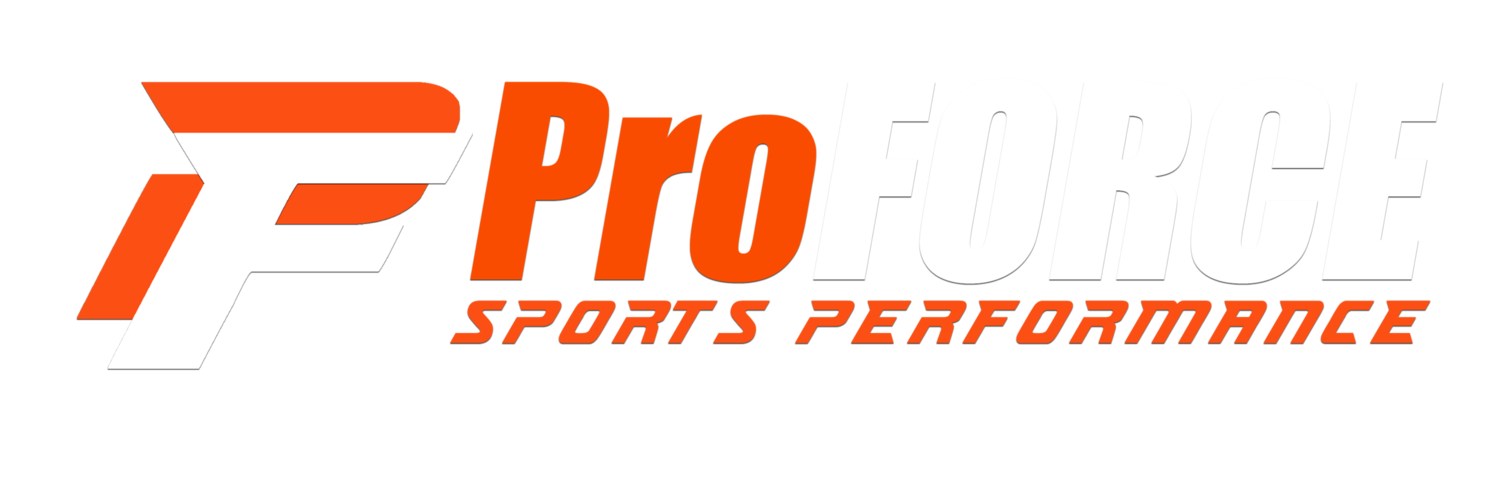At ProForce, our Evaluation is the start of every athlete’s journey. We take every athlete through a series of mobility, orthopedic and athletic assessments to get a complete picture of their overall athleticism. Through this process, we are able to gather the data we need to create their custom training program.
Our standard evaluation is free for every athlete and takes about 30 minutes to complete. at the end of the evaluation, a member of our team will review the results with you and walk you through our recommendations for your athlete.
For every athlete completing an evaluation, we review:
Statement of Goals
Statement of Strengths/Weaknesses
Power, Speed, and Agility Testing
Static Flexibility/Joint System ROM-Symmetry Testing
Our goal is to enable each athlete to become a better, more efficient and effective version of themselves with a more targeted approach to training, leading to improved results.
NEW! Evaluation Enhancements
we now offer 3 enhancement options for our High school and college athlete evaluations. These enhancements utilize our 1080 motion and proteus technology and give us a more comprehensive view of your athlete:
Our standard evaluation is FREE for every athlete and takes about 30 minutes to complete.
Athletes interested in joining our Advanced Speed Program are required to complete a Standard Evaluation + 1080 Motion Evaluation.
At the end of every evaluation, a member of our team will review the results with you and walk you through our specific recommendations for your athlete.
When you purchase a 1080 Sprint and/or Proteus Evaluation, we will provide you with a print out of your data that can be shared with coaches, skills instructors, PTs, Doctors, etc.
Sample 1080 Report - We will review your athlete’s data and share a report similar to this with you.
Sample Proteus Report - We will review your athlete’s data and share a report similar to this with you.
Our evaluation process is backed BY more than 15 RESEARCH ARTICLES and is constantly evolving so we can provide the best possible training experience for every athlete:
•1). Baker, Daniel, and Steven Nance. "The Relation Between Running Speed and Measures of Strength and Power in Professional Rugby League Players." The Journal of Strength and Conditioning Research 13.3 (1999): 230-235. Print.
•2). Barr, Matt, and Volker Nolte. "Which Measure of Drop Jump Performance Best Predicts Sprinting Speed?." Journal of Strength and Conditioning Research 25.7 (2011): 1976-1982. Print.
•3). Cronin, John , and Keir Hansen. "Strength and Power Predictors of Sports Speed." Journal of Strength and Conditioning Research 19.2 (2005): 349-357. Print.
•4). Fairchild, B.P., W.E. Amonette, and B.A. Spiering. "Prediction Models of Speed and Agility in NFL Combine Attendees." The Journal of Strength and Conditioning Research 25.1 (2011): S96. Print.
•5). Green, B., Blake, C., & Caulfield, B. (2011). A Valid Field Test Protocol of Linear Speed and Agility in Rugby Union. The Journal of Strength and Conditioning Research, 25(5), 1256-1262
•6). Holm, David, Markus Stalbom, Justin Keogh, and John Cronin. "Relationship Between the Kinetics and Kinematics of a Unilateral Horizontal Drop Jump to Sprint Performance." Journal of Strength and Conditioning Research 22.5 (2008): 1589-1596. Print.
•7). Kale, Mehmet, Alper Asci, Coskun Bayrak, and Caner Acikada. "Relationship Among Jumping Performances and Sprint Parameters During Maximum Speed Phase in Sprinters." Journal of Strength and Conditioning Research 23.8 (2009): 2272-2279. Print.
•8). Little, Thomas, and Alun Williams. "Specificity of Acceleration, Maximum Speed, and Agility in Professional Soccer Players." Journal of Strength and Conditioning Research 19.1 (2005): 76-78. Print.
•9). McCurdy, Kevin, John Walker, George Langford, Matt Kutz, James Guerrero, and Jermey McMillan. "The Relationship Between Kinematic Determinants of Jump and Sprint performance in Division I Women's Soccer Players." The Journal of Strength and Conditioning Research24.12 (2010): 3200-3208. Print.
•10). McGuigan, Michael, Timothy Doyle, Michael Newton, Dylan Edwards, Sophia Nimphius, and Robert Newton. "Eccentric Utilization Ratio: Effect of Sport and Phase of Training." Journal of Strength and Conditioning Research 20.4 (2006): 992-995. Print.
•11). Nimphius, Sophia, Michael Mcguigan, and Robert Newton. "Relationship Between Strength, Power, Speed, and Change of Direction Performance of Female Softball Players." Journal of Strength and Conditioning Research 24.4 (2010): 885-895. Print.
•12). Serpell, B., Ford, M., & Young, W. (2010). The Development of A New Test of Agility For Rugby League. The Journal of Strength and Conditioning Research, 24(12), 3270-3277.
•13). Shalfawi, Shaher , Ammar Sabbah, Ghazi Kailani, Espen Tonnessen, and Eystein Enoksen. "The Relationship Between Running Speed And Measures of Vertical Jump In Professional Basketball Players: A Field-Test Approach." The Journal of Strength and Conditioning Research 25.11 (2011): 3088-3092. Print.
•14). Sheppard, J.M., W.B. Young, T.L.A. Doyle, T.A. Sheppard, and R.U. Newton. "An Evaluation of a New Test of Reactive Agility and its Relationship to Sprint Speed and Change of Direction Speed." Journal of Science and Medicine in Sport 9 (2006): 342-349. Print.
•15). Young, W., Cormack, S., & Crichton, M. (2011). Which Jump Variables Should Be Used to Assess Explosive Leg Muscle Function?.International Journal of Sports Physiology and Performance, 6, 51-57.



